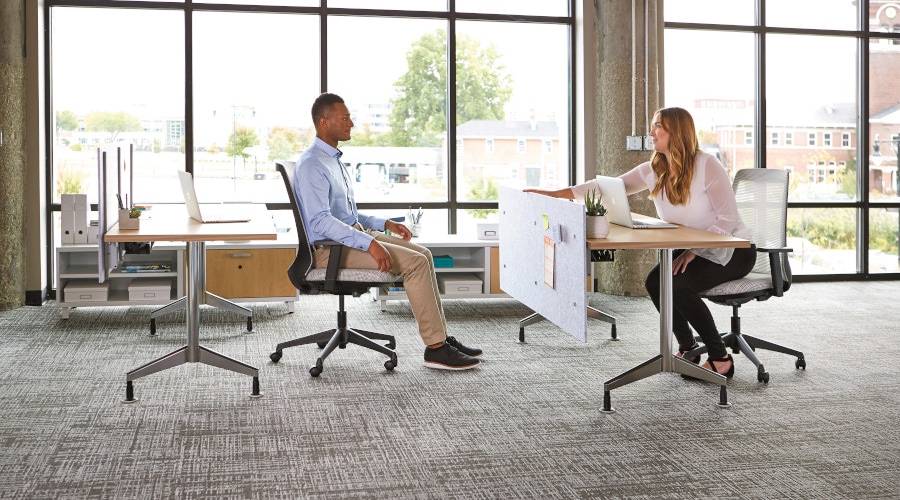- What's New
- Pricing & Purchasing
- Lead Times
- Literature & Samples
- Services & Warranties
- Careers
- Find a Rep
Re-Envisioning Workplace Culture and Community

Humans are social creatures. Although working from home and remote work may be convenient, many people surely miss connecting with colleagues in team meetings or over lunch in the office café.
Those interactions have a significant impact on workplace culture. Employees link their physical and emotional experiences at work to their perception of an organization. Those who forge friendships in collaborative spaces or through group activities in work environments may associate those positive feelings of camaraderie with their employer’s brand.
But the pandemic disrupted that sense of community. New health and safety protocols at the office may make it difficult for employees to reconnect with their colleagues. Staples like monthly happy hours and all-hands meetings aren’t likely to happen for the foreseeable future.
We encourage employers to consider what defines their workplace culture as they return to the workplace. Below, we share a few workplace design ideas for how they might rebuild a sense of community with thoughtful changes to space division, safety, flexibility and office capacity.
Creating Safe Spaces in Public Places
Before the pandemic hit, open-concept offices were popular. By encouraging spontaneous social interactions and ensuring that employees didn’t feel isolated, they tended to foster a positive workplace environment and company culture.
But now, people may feel apprehensive about being in close contact with their colleagues. After all, the average open office provides just 125 to 175 square feet per employee.
Employers can divide space and help employees practice social distancing by installing adjustable privacy screens between workstations or placing portable, freestanding screens on work surfaces. In high-traffic areas, they may place privacy pods, like WiggleRoom, in rows to direct foot traffic and make contact tracing more efficient -- while giving individual employees a safe, enclosed space to work.
Creative space division can help employers safely hold the gatherings that contribute to a sense of community. Mobile screens, like Connection Zone Screens or All Terrain Screens, can serve as room dividers, transforming large collaborative spaces into smaller areas that allow for one-on-one coffee chats or socially-distanced lunch breaks for small groups.
Empowering Employees
When employees can control how they socialize, work and collaborate, they’re happier, more productive and more engaged with their organization. Ownership of personal space is even more important in the wake of a pandemic, when a lack of control can exacerbate a person’s anxiety about his or her health and safety.
Flexible workstations allow employees to engage with their workplace community in ways that make them most comfortable. Some may feel safest with adjustable privacy screens lifted to their full height. Others may use mobile Tattoo Flex Screens to create a separate nook.
Our modified 700 Series Storage solutions are equipped with tall back panels that give people the feeling of an individual workstation, even if they sat in shared benching pre-pandemic. Markerboard surfaces offer a place for employees to write to-do lists, notes or jokes, making the workspace their own.
Staying Flexible as the Community Grows
Flexible design recommendations and strategies also help employers adapt as they scale up their office capacity. In addition to mobile screens, our Tattoo Collection offers slim seating and storage on casters that employees can easily reconfigure to maintain distance even as more people return to the workplace.
Of course, social distancing won’t be the norm forever. In the long term, employers may repurpose All Terrain Screens and Tattoo Flex Screens as whiteboards for group meetings or bulletin boards to display announcements about company happy hours or retreats.
Relying on Community through Change
Zoom happy hours and mandatory masks are bound to make workplace culture feel different. By considering space division, safety, flexibility and capacity as they formulate their return-to-work plans, employers can empower their employees to safely reconnect with their workplace community.
Learn more about KI's solutions and design tips for safely returning to the office.
Subscribe
Stay up to date with the latest trends and more.










